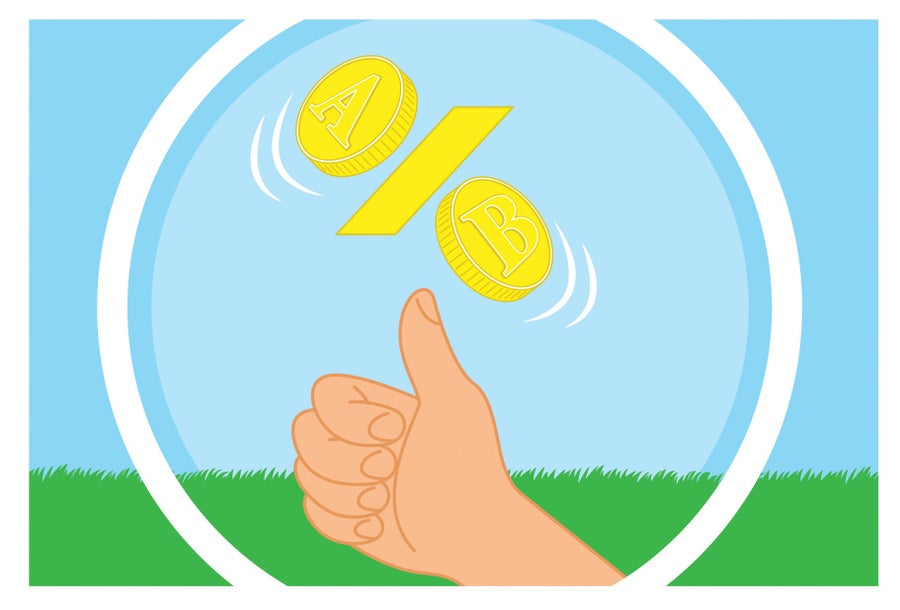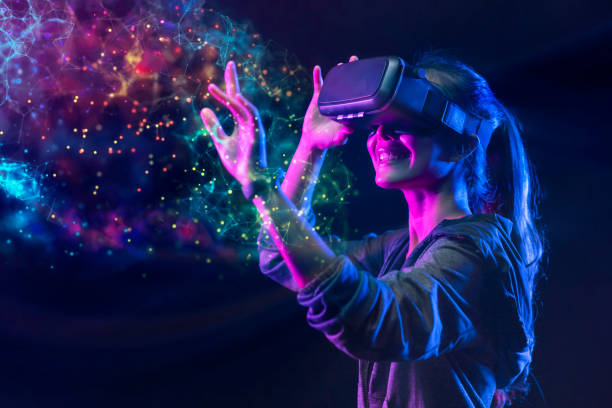The coin flip is one of the simplest acts imaginable. A flick of the thumb, a brief flight through the air, and the result—heads or tails—seems to appear by sheer chance. Yet behind this ordinary gesture lies a remarkable interplay of physics, probability, and human perception. Though the coin flip appears effortless, it is a gateway into understanding how randomness shapes our world, how our minds misinterpret chance, and why luck often feels stranger than logic would allow.
At first glance, flipping a coin seems straightforward. Two outcomes, equal in likelihood, dictated by the laws of probability: fifty percent heads, fifty percent tails. But this apparent simplicity is deceptive. The journey of a coin through the air is governed by subtle forces—gravity, torque, air resistance—and tiny variations in the initial flick can influence the result. The physics of coin flips is deterministic at its core, yet it produces patterns that seem random to human observers. This tension between determinism and randomness is what makes the coin flip a window into the broader mysteries of probability.
The Physics of a Flip
When a coin leaves the fingertips, it begins a complex dance. It rotates around its axis, arcs through the air, and eventually succumbs to gravity’s pull. The angle of the flick, the force applied, the spin imparted by the thumb, and even subtle air currents all influence the outcome. In principle, if one had perfect knowledge of every variable—the exact force, angle, rotation, and air resistance—the result could be predicted with absolute certainty. In other words, coin flips are not truly random; they are deterministic events governed by classical mechanics.
Yet for humans, predicting the outcome is practically impossible. Our fingers cannot replicate the precise force or angle consistently, and microscopic variations compound with each flip. These tiny differences are enough to make the result unpredictable, creating the illusion of randomness. Scientists have modeled coin flips mathematically, showing that even minor deviations in torque or velocity drastically change the likelihood of heads or tails. Some studies suggest that a perfectly executed flip, under laboratory conditions, may favor the starting face slightly, revealing a hidden bias in what we perceive as a fair chance.
This subtle skew underscores the delicate interplay between physics and perception. While the coin obeys deterministic laws, our inability to measure and control all variables transforms a predictable system into one that appears random. The coin flip becomes a metaphor for the boundary between certainty and uncertainty, reminding us that even the simplest actions contain layers of complexity.
Probability and Human Intuition
Randomness is inherently counterintuitive. Despite centuries of mathematical study, our minds struggle to interpret probability accurately. The coin flip illustrates this vividly. People often believe that after a streak of heads, tails becomes more likely—a phenomenon known as the “gambler’s fallacy.” In reality, each flip is independent; the coin has no memory. The probability remains constant, yet our brains perceive patterns where none exist.
This cognitive bias arises because humans are pattern-seeking creatures. Evolution shaped us to detect regularities in nature, an ability that once conferred survival advantages. Spotting movement in the forest or changes in the environment could mean the difference between life and death. However, in the realm of probability, this instinct can mislead us. A series of consecutive coin flips can feel improbable, prompting the belief that a reversal is “due,” even when statistical reality says otherwise.
Another psychological trick is the illusion of control. People often believe that how they flip a coin—using their thumb in a certain way, or aiming for a particular height—can influence the outcome. Experiments suggest that while skilled coin flippers can slightly bias results, the effect is minor compared to the randomness imposed by uncontrollable variables. Yet the perception of control persists, revealing the human desire to impose order on a chaotic world.
Randomness in Nature
The study of coin flips extends beyond gambling and games. Randomness permeates nature at every scale, from the microscopic world of quantum particles to the vast systems of weather and ecosystems. Just as the coin’s outcome is influenced by small variations, so too are natural systems sensitive to initial conditions. This concept, famously explored in chaos theory, shows that deterministic systems can produce unpredictable behavior when initial states are slightly altered. A coin flip is, in a sense, a miniature example of this principle.
Randomness is also essential to evolution. Genetic mutations, subject to probabilistic rules, drive the diversity of life. Natural selection then amplifies traits that confer survival advantages. Without chance variations, life as we know it would not exist. Similarly, in physics, processes such as radioactive decay occur according to probabilistic laws, defying precise prediction while obeying statistical regularities over time. The coin flip mirrors these larger patterns, offering a tangible demonstration of uncertainty in a controlled, observable context.
Games, Decisions, and Strategy
Coin flips have long played a role in human decision-making. From settling disputes to choosing sides in sports, they provide a simple method to resolve conflict impartially. The fairness of a coin relies on its near-equal probability for each outcome, a principle that transcends culture and era. Yet even this simplicity carries profound implications. The study of probability in coin flips forms the foundation of game theory, risk assessment, and decision-making under uncertainty.
In strategic contexts, understanding the mathematics of coin flips can confer an advantage. Consider a series of flips used in a game: while each flip is independent, the law of large numbers guarantees that over many trials, outcomes will approach the expected probabilities. Professional gamblers, statisticians, and scientists exploit this principle, demonstrating that even in apparently random systems, predictability emerges over time. The coin flip thus bridges intuition and logic, highlighting the interplay between short-term unpredictability and long-term statistical order.
Bias and Human Influence
While coins themselves are often assumed fair, subtle biases exist. Physical imperfections, weight distributions, and even the manner in which a coin is minted can slightly favor one side. Researchers have found that flipping a coin from a consistent starting orientation can produce a predictable tilt in results. These findings do not undermine the concept of randomness; rather, they enrich our understanding of the delicate factors that shape probabilistic events.
Human behavior further complicates randomness. The act of flipping a coin is not purely mechanical; it is performed by a body subject to fatigue, emotion, and habit. Over repeated trials, patterns can emerge, not from the coin itself, but from the flipper. This introduces a layer of complexity, demonstrating that in systems involving humans, perceived randomness is a blend of physical law and behavioral nuance.
The Mathematics Behind Chaos
Mathematics provides the lens through which the coin flip can be understood. Classical probability theory describes the idealized fifty-fifty chance, but real-world conditions demand more sophisticated models. Statistical mechanics, chaos theory, and dynamical systems theory all contribute insights into how deterministic processes produce unpredictable outcomes.
One striking revelation from mathematical studies is the sensitivity of outcomes to initial conditions, a hallmark of chaotic systems. Even infinitesimal variations in the angle or velocity of a flip can change the result. This sensitivity mirrors broader phenomena in science, such as weather systems, planetary orbits, and fluid dynamics. The coin flip becomes a microcosm of complexity, illustrating how simplicity can harbor unpredictability and how tiny differences can yield dramatic consequences.
Lessons from a Simple Toss
Beyond the scientific implications, coin flips teach profound lessons about perception, luck, and the nature of uncertainty. They remind us that chance governs more of life than intuition admits, that human minds are wired to see order even where none exists, and that understanding probability requires both discipline and humility. The coin flip is both a game and a mirror, reflecting our cognitive biases, our desire for control, and our fascination with fate.
In daily life, we encounter randomness constantly—through accidents, opportunities, successes, and failures. Recognizing the role of chance does not lead to fatalism; rather, it encourages better decision-making. By embracing probability, humans can navigate uncertainty more effectively, manage risk, and appreciate the beauty of outcomes that are neither wholly predictable nor entirely chaotic.
Beyond the Physical Coin
The lessons of the coin flip extend into finance, politics, and science. Stock markets fluctuate with a degree of unpredictability reminiscent of a spinning coin. Political elections, sports outcomes, and technological innovations all involve elements of chance, small variations magnified into significant consequences. Understanding randomness helps us interpret data, design experiments, and evaluate risk intelligently.
Even in the realm of quantum mechanics, the principles are echoed. Particles behave probabilistically, outcomes are uncertain, and observers must grapple with statistical patterns rather than deterministic paths. The coin flip, humble as it is, becomes a pedagogical tool for grasping the fundamental nature of reality, bridging tangible experience with abstract theory.
The Psychological Allure
Part of the enduring fascination with coin flips stems from psychology. Humans are storytellers, and each flip invites narrative: “If only heads comes up, my plan succeeds.” We invest meaning in chance events, projecting hopes, fears, and expectations onto the motion of a small metal disk. This emotional resonance explains why coin flips persist as a cultural and social ritual, from sports to board games to ethical dilemmas.
Moreover, the coin flip satisfies a human craving for fairness. It is a neutral arbiter, seemingly devoid of bias, offering a finality that human judgment cannot always provide. In moments of indecision, the flip carries symbolic weight, transforming a simple physical event into an act of resolution, imbued with suspense and anticipation.
Embracing Uncertainty
Ultimately, the science of coin flips teaches humility. It reminds us that randomness is neither chaos nor disorder—it is structured unpredictability. It is a force that governs both mundane and cosmic events, shaping outcomes while remaining elusive. In a spinning coin, we see both determinism and uncertainty, physics and perception, chance and choice.
By studying the coin flip, scientists and philosophers alike gain insight into the nature of reality, probability, and human cognition. By observing it, players and decision-makers confront the limits of intuition and learn to embrace uncertainty. The coin flip becomes a metaphor for life itself: a delicate balance of skill, circumstance, and fate, where outcomes are never fully under our control, yet patterns emerge when patience and perspective prevail.
In every flick, every spin, every fall to earth, the coin reminds us of the elegance of randomness and the quirks of the human mind. It is a simple act that embodies profound truths, an ordinary event that illuminates extraordinary principles. The next time a coin leaves your hand, remember: within that brief arc lies physics, mathematics, psychology, and philosophy—all converging in a dance that has fascinated humans for centuries.
Chance, like life, is both fragile and inexorable. And in the flip of a coin, we glimpse the paradox: that randomness is at once predictable in principle, mysterious in practice, and endlessly compelling to the human imagination.






